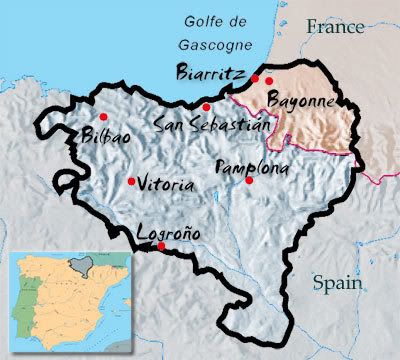 Learning about cultural groups, usually of a similar background (Europeans), is often a good way to understand your own heritage. The history of the Basques shows many similarities to the Camunians or Lombardian Alpines; however, not much to southern Lombardy.
Learning about cultural groups, usually of a similar background (Europeans), is often a good way to understand your own heritage. The history of the Basques shows many similarities to the Camunians or Lombardian Alpines; however, not much to southern Lombardy.For one thing, the Basque Country is located within the rugged Pyrenees Mountains between Spain and France, which is similar to our Alpine heritage. Also, the Basques derived partly from the Gallic Celtiberians, which is similar to our Gallic past. They have a distinct language, just like the Camunians or East Lombardians had their own language. Not surprisingly, considering these facts, there seemed to have been a somewhat of a hard road from Gallic paganism to Roman Catholicism. One other similarity is Basque and Camunian history leads us absolutely straight back to prehistoric times. In other words, being partly descended from proto-European peoples.
The Basque diaspora is also somewhat similar to Lombardian migration in general; although many more Basques live on this side of the ocean than do in the Basque Country itself. What I find incredible about Basque communities around the world, seems to be their very strong folkish connection to one another. That is one big difference, as the Risorgimento shattered Lombardian nationhood. Only small out-of-the-way regions, like the Camonica Valley, kept a genuinely distinct identity. We'll get back to this issue later.
Basques migrated very heavily, especially considering that the Basque Country is not particularly large, to Mexico, Argentina, Chile, and Brazil. Of course, we know that Lombardians migrated to South America, especially to "the Cone of South America," but not really to Mexico in any large numbers. All of this is really quite remarkable in comparison. In a larger sense, it could be said that the Basque Country is similar to the Val Camonica, the Ticino, Friuli, the Ladins, and other close-knit mountain communities in the Alps. Amazingly, Basques make up 10% of the population of Argentina.
The United States apparently has only about 57,000 Basque-Americans, less than even Columbia. According to the Basque-Americans Wikipedia page, "The states with the largest Basque-American populations are California (20,868), Idaho (6,637), Nevada (6,096), Washington (2,665) and Oregon (2,627)." However, despite their small numbers, they seem to have made an impact all over the country. Although I have been astounded by the accomplishments of Lombardians in the United States, also in very small numbers (with historically perhaps twice as many Lombardian immigrants) and spread far and wide, I was even more impressed with the strength and folkishness of the Basque communities, also spread very far and wide and thin.
I recall that there was a very small but close-knit Basque community in San Francisco. There are about fifty Basque clubs in the United States. One apparently is in San Francisco. I recall the Basque Hotel in San Francisco, which apparently is the hub of the community here. Boise, Idaho boasts 15,000 Basque-Americans, making it the largest concentration of Basque-Americans. I was going to only make a short entry here, but this is surely an area that I wish to read more about. The more I learn, the more I realize that there is to learn.
**************************************************
7-2-11 ADDITION: A few times in the last several days, I couldn't help after writing this entry, I thought that even further than the similarities here, there is an even closer tie-in between California Basques and California Ticinese. If we look at the culture and terrain of the Basque Country and Ticino, and also of the similarity of their migration and settlement in California (both north and south), the cultural tie-ins are just so similar. The only big difference is that Ticinese are lost between Swiss and Italian identity, while the Basques are not lost between Spanish and French identity.

No comments:
Post a Comment